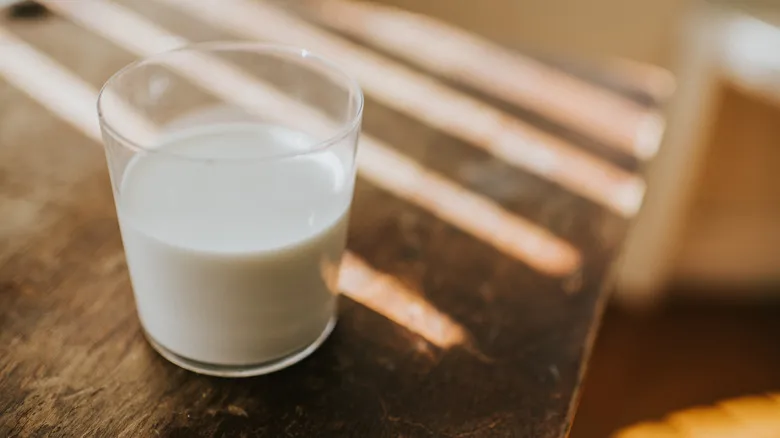How you can tell if your milk is spoiled

Milk is generally safe to drink for several days after its best-by date, as these dates primarily indicate quality rather than safety. However, it's wise to check it to avoid accidentally consuming spoiled milk. One of the most common ways to assess freshness is the sniff test. If your milk has a sour or unusual odor, it’s likely going bad. Other indicators of spoilage include a sour taste and a yellowish hue. Eventually, spoiled milk will start to thicken and form lumps.
To maximize the shelf life of your milk, keep it at a temperature below 40 degrees Fahrenheit. Since refrigerator temperatures can vary, it's best to store milk towards the back, where it’s less impacted by the door opening. Additionally, try not to leave milk out longer than necessary when using it. Alternatively, milk can be frozen in an airtight container, but this may alter its texture, making it more suitable for cooking than for drinking. Skim milk tends to freeze better than whole milk, which often separates upon thawing.
You can use slightly spoiled milk to bake with

Using sour milk in baking might initially sound unappealing, but it's actually a technique employed by chefs worldwide. It's important to clarify that we're referring to slightly soured milk, not the kind that's completely curdled. If your milk has a foul odor, a yellow tint, or a lumpy texture, it's best to discard it. On the other hand, sour milk can impart a delightful tang to various dishes due to its heightened acidity, which occurs as lactose converts to lactic acid during spoilage. This quality makes it an excellent ingredient in many types of bread, where it serves as a leavening agent, as well as in baked goods like scones and biscuits.
Additionally, sour milk can be utilized as a thickening agent in soups and stews, incorporated into salad dressings such as ranch and blue cheese, or transformed into homemade cheese. While fresh milk can also be curdled with vinegar or lemon juice to make cheese, sour milk accelerates the process, making it more efficient. Furthermore, it can serve as a substitute for buttermilk in recipes, such as buttermilk pancakes.
Recommended

Jam Vs Jelly: Here's The Difference Between The Two

The Secret To Perfectly Cooked Bacon Is An Ingredient Everyone Has

How To Store Your Homemade Ice Cream The Right Way

What Gives Cotton Candy Grapes Their Signature Sweet Flavor
Next up

